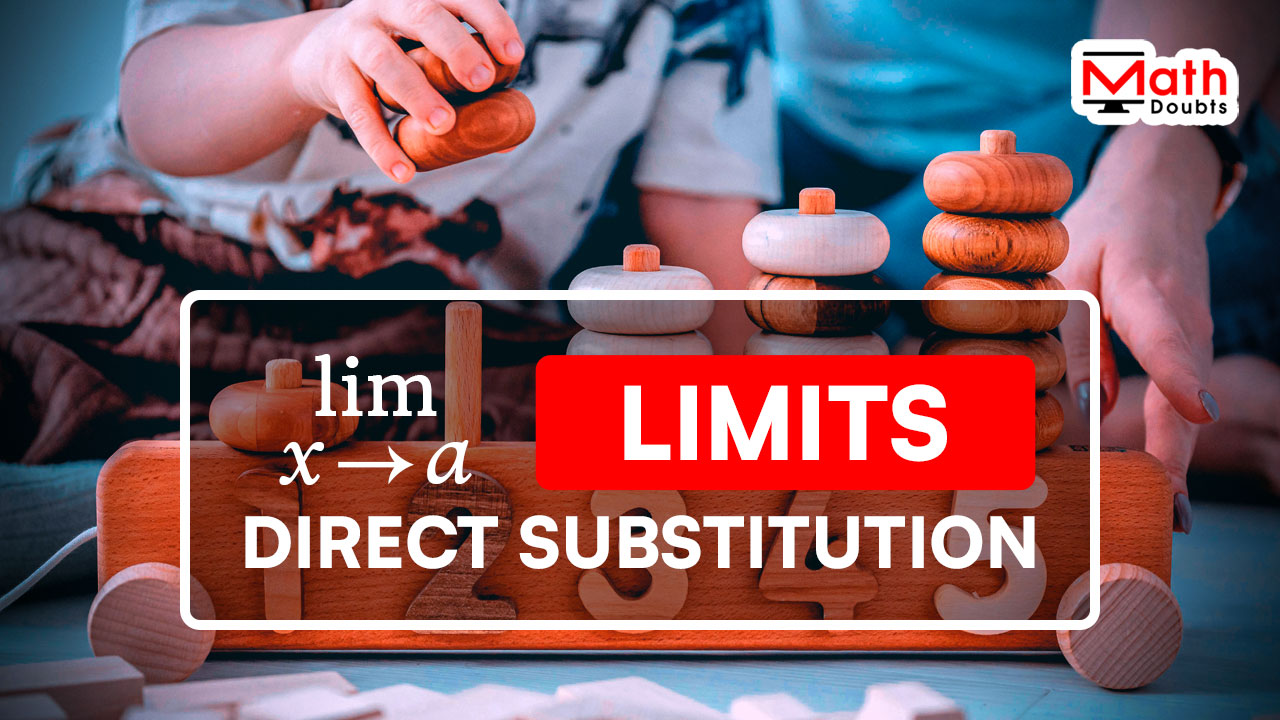The direct substitution is a basic method in mathematics and it can be used to find the limit of a function in calculus. In this method, the quantity at which the limit should be evaluated is directly substituted in the function to find its limit. So, this method is called evaluating the limits by direct substitution.

Now, let’s learn more about finding the limit of a function by direct substitution.
There are two different cases, which we should know before using it.
Now, let’s learn how to find the limit by direct substitution method from some simple limit problems.
Evaluate $\displaystyle \large \lim_{x \,\to\, 2}{\normalsize (x+6)}$
Substitute $x \,=\, 2$ in the binomial function
$=\,\,\,$ $2+6$
$=\,\,\,$ $8$
The value of the function after substituting $x$ equals to $2$ is $8$ and it is a finite value arithmetically.
Therefore, the limit of $x+6$ as $x$ approaches to $2$ is equal to $8$.
Now, let’s see another example to learn the limits by direct substitution method further.
Evaluate $\displaystyle \large \lim_{x \,\to\, 3}{\normalsize \dfrac{27-3^{\displaystyle x}}{3-x}}$
Substitute $x \,=\, 3$ in this rational function.
$=\,\,\,$ $\dfrac{27-3^{\displaystyle 3}}{3-3}$
Now, let’s simplify this arithmetic expression in rational form to find its value.
$=\,\,\,$ $\dfrac{27-3 \times 3 \times 3}{3-3}$
$=\,\,\,$ $\dfrac{27-27}{3-3}$
$=\,\,\,$ $\dfrac{0}{0}$
The value of the function after substituting $x$ equals to $3$ is indeterminate and it clears that the direct substitution method is failed to find the limit of this function.
The above two examples express two different cases of finding the limits by direct substitution and they clearly help you to understand how to find the limit of a function by direct substitution method in calculus.
$(1).\,\,$ $\displaystyle \large \lim_{x \,\to\, 2}{\normalsize (x^3-5x+6)}$
$(2).\,\,$ $\displaystyle \large \lim_{x \,\to\, \Large \frac{\pi}{2}}{\normalsize \dfrac{x}{4+\sin{x}}}$
The limit questions on finding the limits by direct substitution method for your practice with solutions to learn how to find the limit by direct substitution in calculus.
A free math education service for students to learn every math concept easily, for teachers to teach mathematics understandably and for mathematicians to share their maths researching projects.
Copyright © 2012 - 2025 Math Doubts, All Rights Reserved